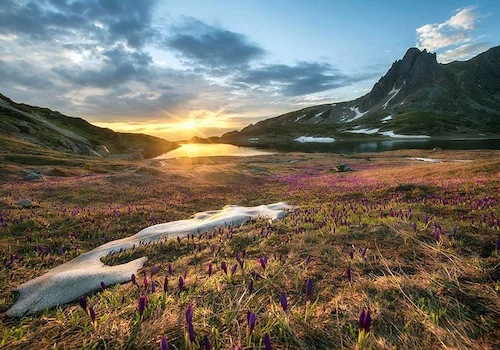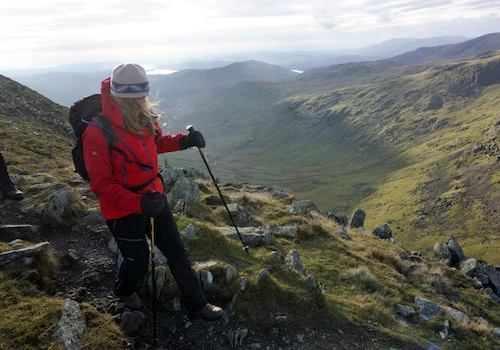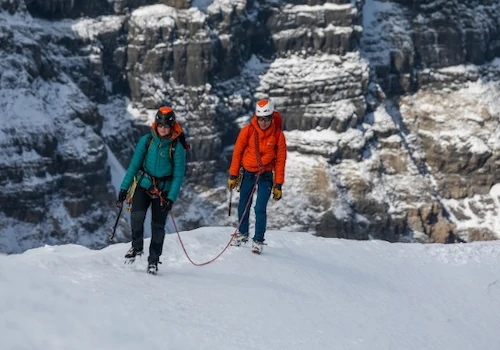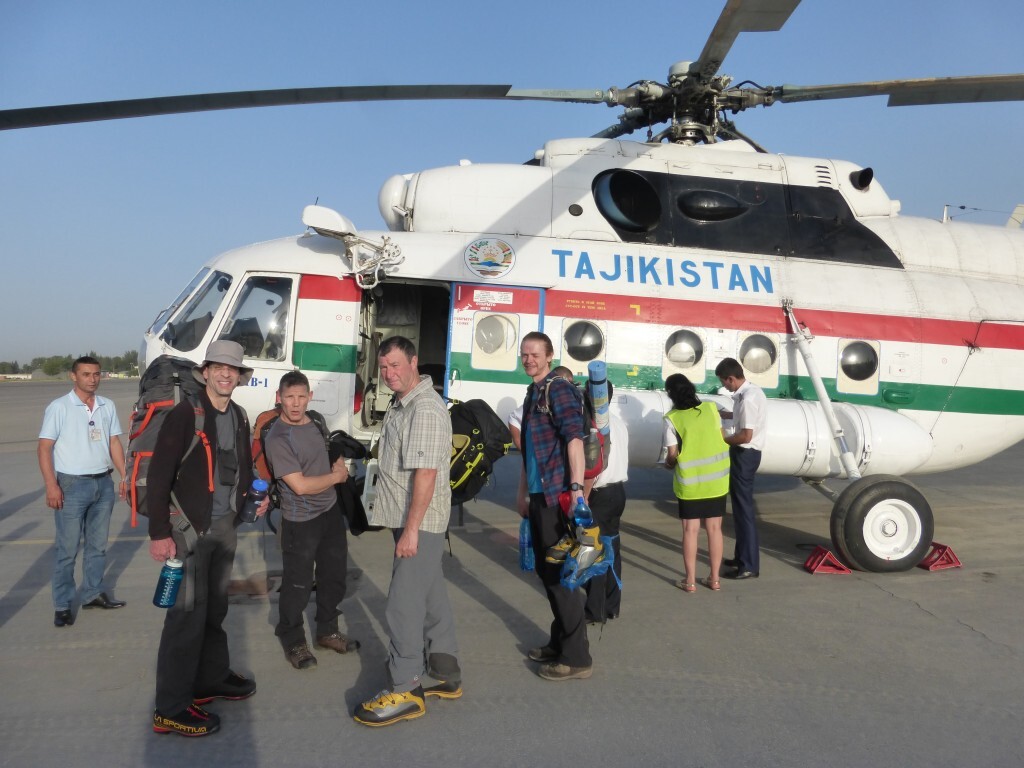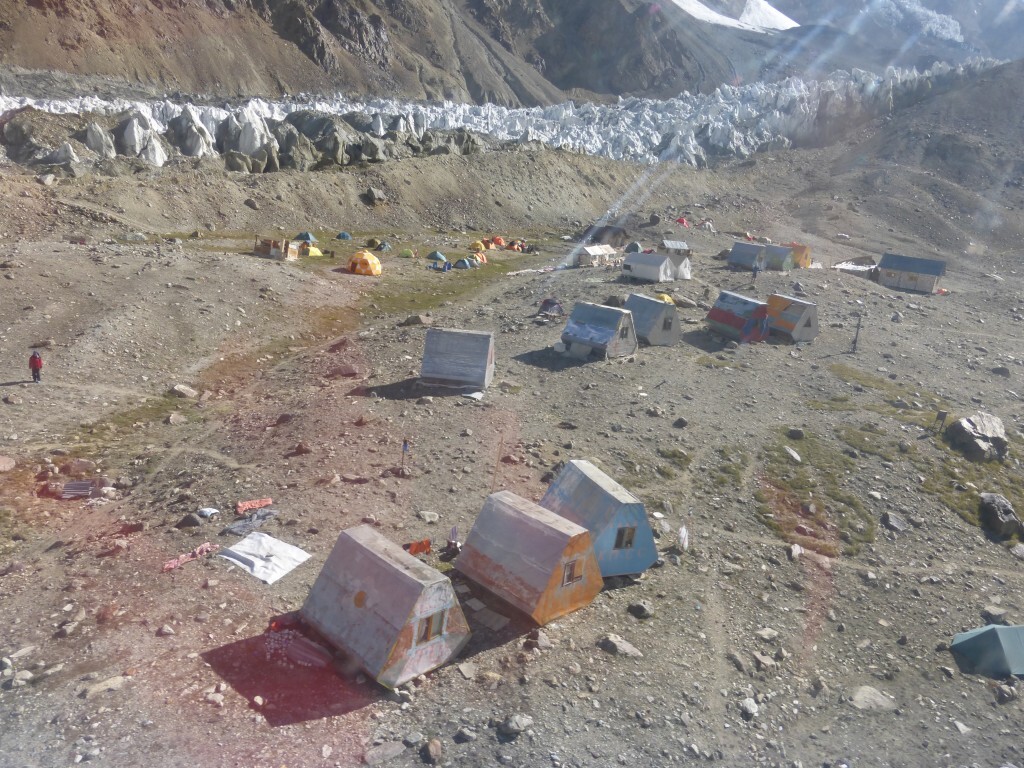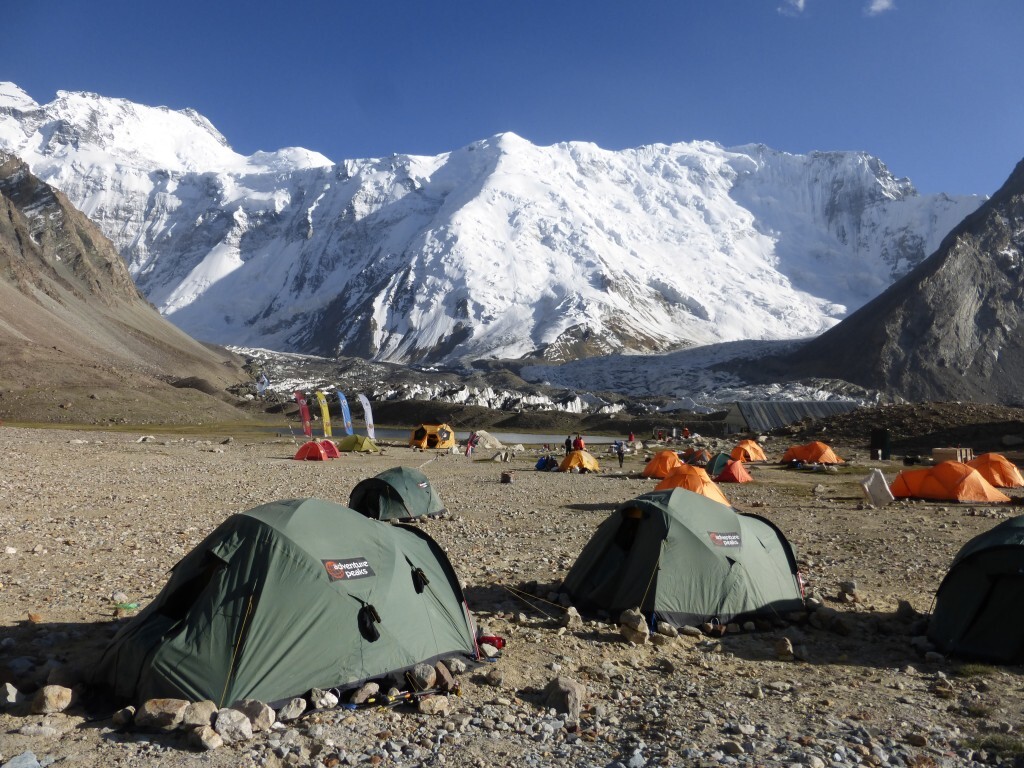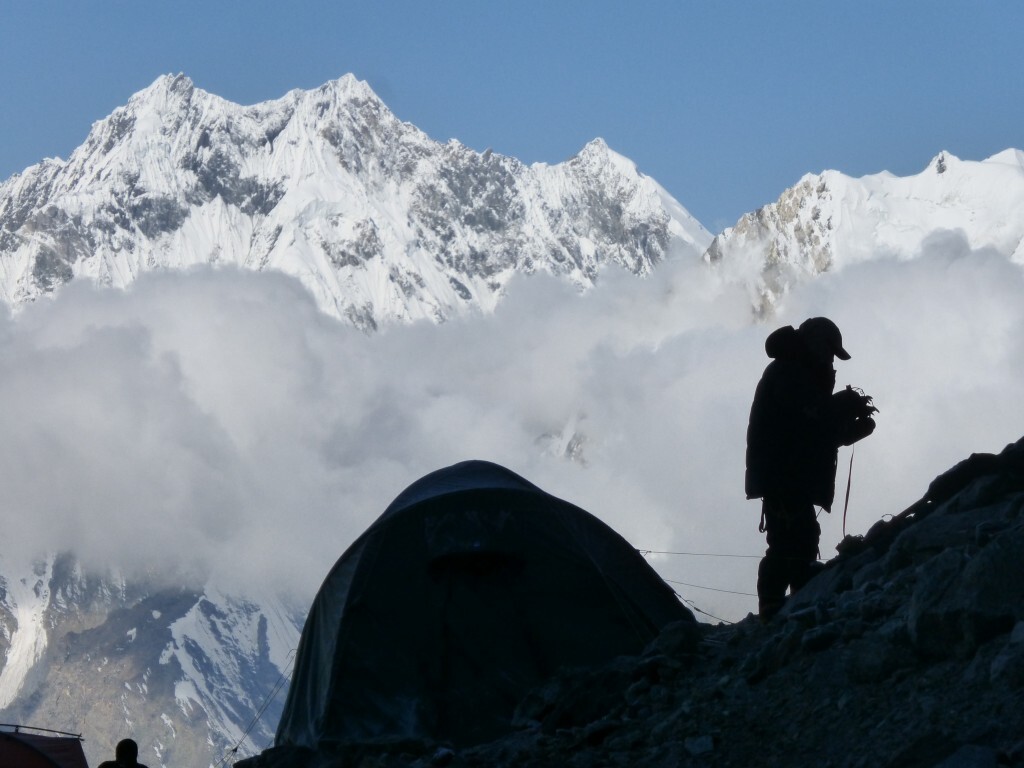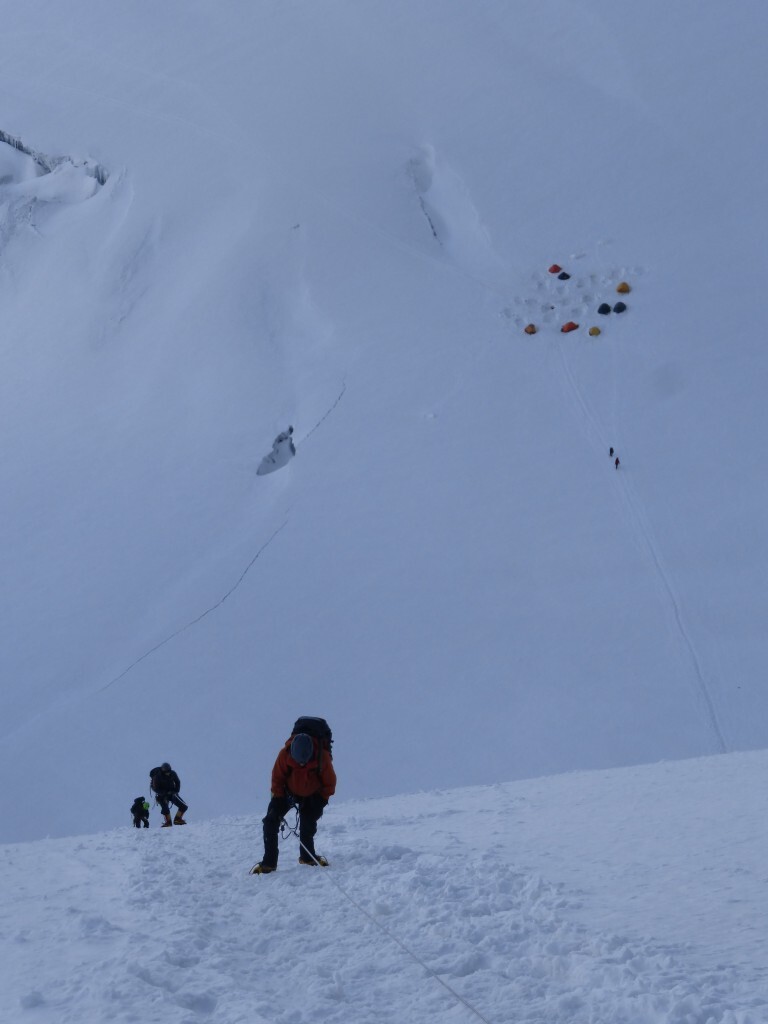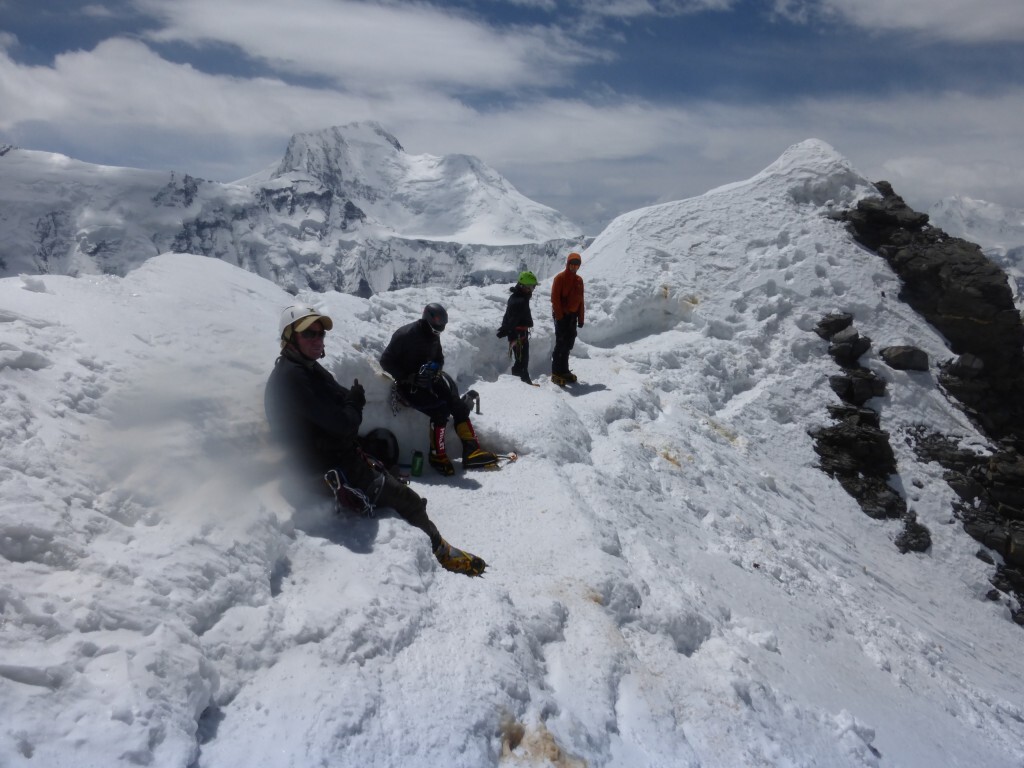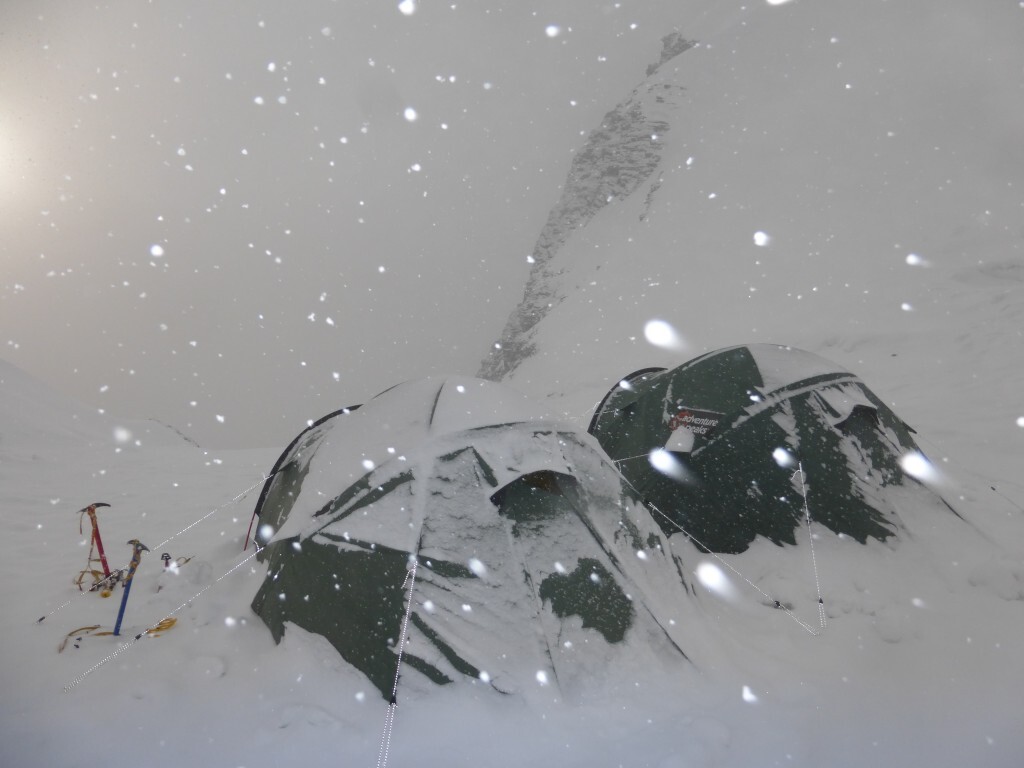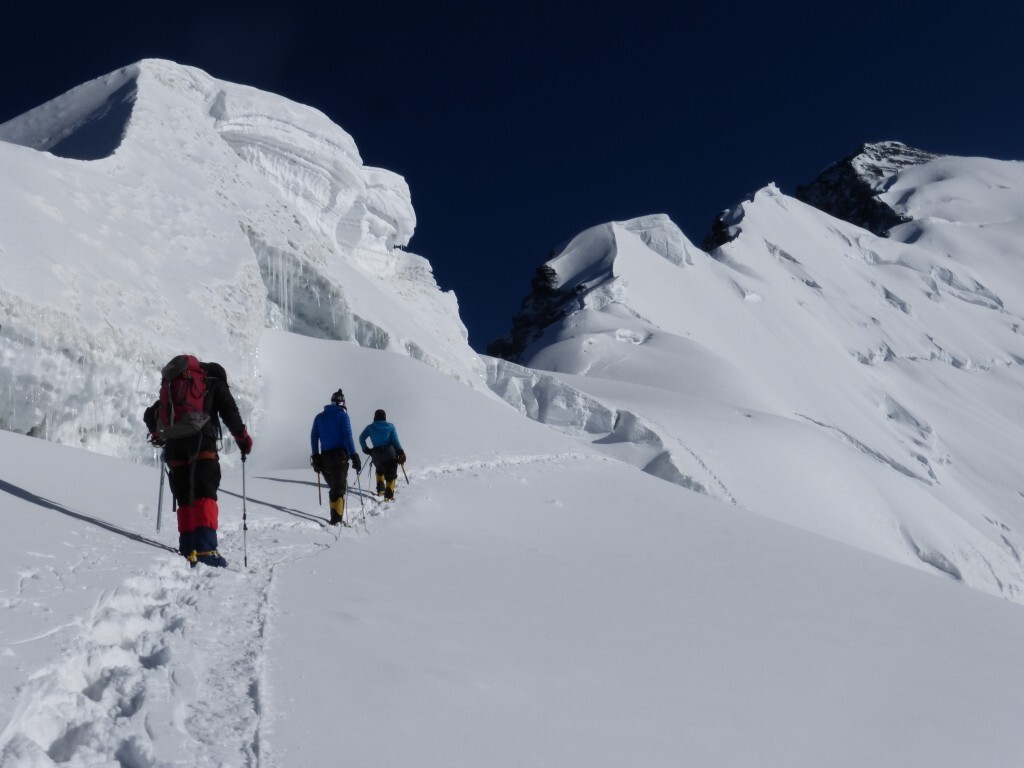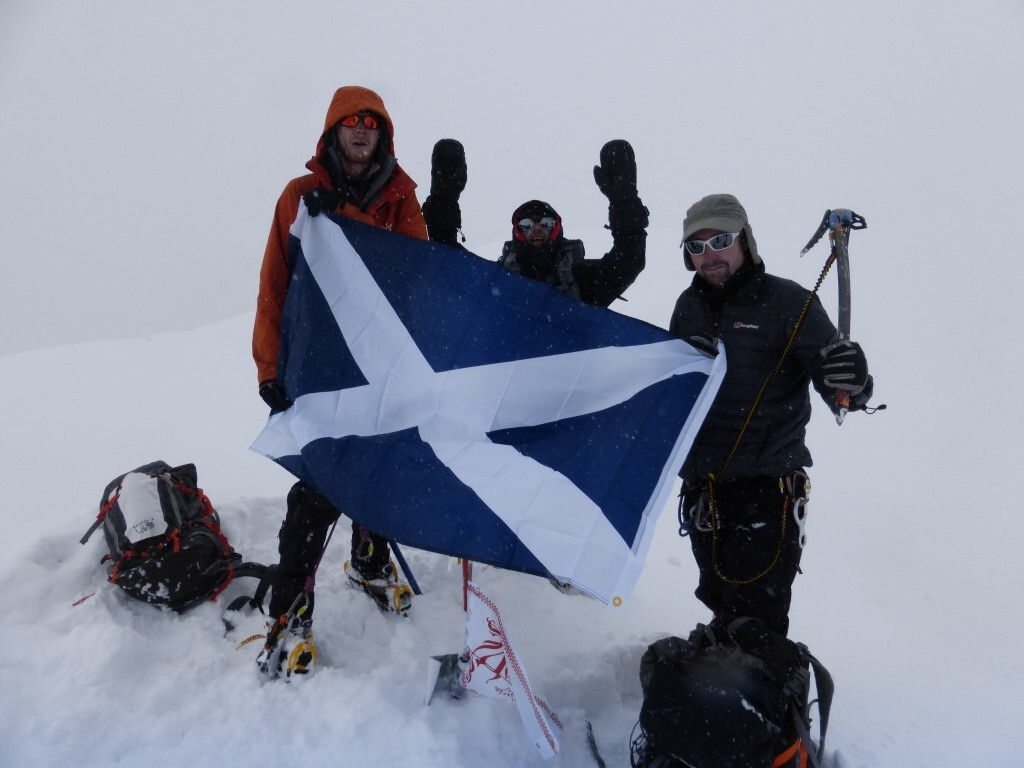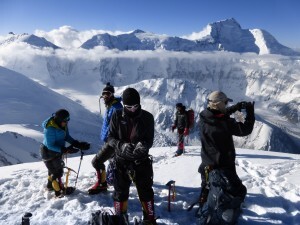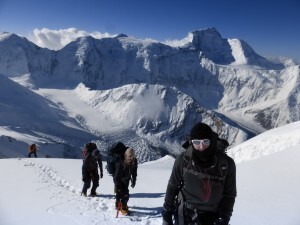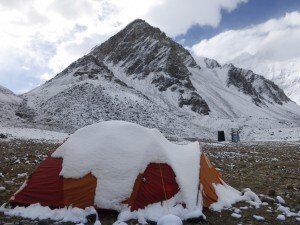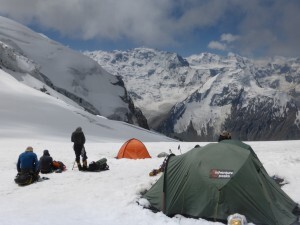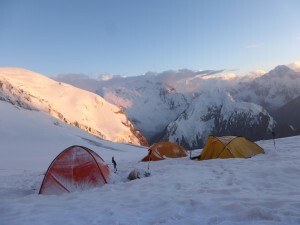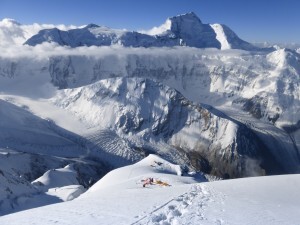
- Expeditions
By Region
By Month
By Grade
By Height
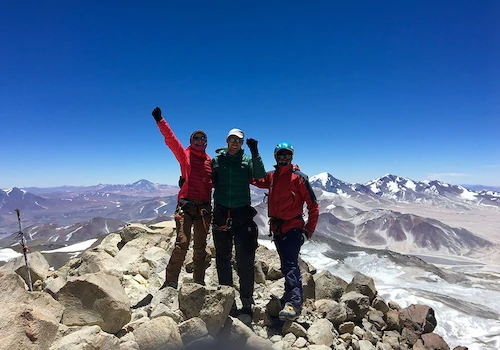
- Treks
- UK & Alpine
- Schools
- Hire
- News
- Shop
Trip Report - Korzhenevskaya July 2016

Korzhenevskaya, Tajikistan
22nd July – 18th August 2016
Leader: Rob Smith
The rotors of the heavily laden helicopter thumped above our heads, noise increasing, and we lifted off the tarmac of Dushanbe airport in the early morning light. Less than twenty-four hours before, our team of six had assembled in the capital of Tajikistan for our trip to Korzhenevskaya at 7105 metres. One of the revered ‘Snow Leopard’ peaks, which compromises five peaks over 7000m in Central Asia, Korzhenevskaya sits in the Pamir mountains in the sparsely populated eastern part of Tajikistan. Check out the other ‘Snow Leopards’
- The adventure begins for Denis, Gordon, Roy, Andrew and Zac.
As the helicopter lumbered along for an hour we flew through high sided valleys with wide ribbons of rivers below. Tajikistan has a plentiful fresh water supply thanks to its glaciers, and many visitors are surprised to see elaborate fountains and green parks in the capital. Gaining height, all signs of habitation were left behind until without warning, a cluster of buildings and tents appeared below, and it was clear we had arrived at Base Camp at 4200 metres elevation. After checking all our equipment had been off loaded, we lay on top of it, as the helicopter used all of its power to strain back into the thin air at this altitude, creating a down draft easily capable of blowing kit bags across the landing site.
- Korzhenevskaya Base Camp from the air
Base camp was a mix of climbers from Russia, Iran, Poland, Germany and France with ourselves added to the mix. The Russian team was a large national team selecting climbers for a later expedition to K2 while the Poles were attempting to break the speed record for climb all ‘Snow Leopard’ peaks in one season. We soon pitched tents, settled in and made a plan for the acclimatisation phase of the trip. Roy, Andrew, Gordon, Zac and Denis were all experienced climbers and we shared stories over our next few meals together before the hard work began. We spent the first few days getting used to the altitude of Base Camp, preparing equipment, refreshing rope skills and selecting food before making our first forays onto the mountain. We decided to combine our acclimatisation trips with light load carries on Korzhenevskaya, to save time and reduce workload for the climb itself.
- Settled into Base Camp
We planned three rotations on the mountain, the final one being the summit bid. Other teams planned to take less time, and consequently their success rate was reduced. We established Camp 1 at 5100 metres, at the base of the glacier and spent two nights there climbing higher during the day, in the well-established adage of climb high and sleep low. Unfortunately Denis sat out the first rotation feeling unwell and later decided to leave the trip, with five of us set to continue. The Polish team very generously gave him a seat on their helicopter, as the impressive Andrzej Bargiel left having successfully climbed Korzhenevskaya and Ismoil Somoni, on his way to Khan Tengri and Peak Pobeda. Andrzej went on to break the speed record, so huge congratulations to him and the team.
- Gordon outside the tent at Camp 1
A few days back at Base Camp were enjoyed with most of the group using the basic ‘sauna’ for a wash, while kit was modified and rest was maximised. The next rotation we established Camp 2 at 5800 metres, as the terrain changed from the dry and dusty lower slopes to a route winding up a narrow glacier slope into a wide snow basin above. It was a slog in the hot daytime temperatures which plummeted as soon as the sun dropped behind a ridge. However we are all comfortable in the tents and sleeping bags, thanks to good kit selection by everyone. We climbed to 6000 metres to boost our acclimatisation before packing up and heading down the mountain, putting us in an excellent position for a summit bid. Sitting at 5800 metres it was tempting to try for the summit, but the jump from Camp 2 to more than 7000 metres was too much to attempt. On descent we helped an exhausted Iranian climber return to Camp 1, where he chose to spend the night while we dropped back to Base Camp. He later made it safely off the mountain.
- Climbing the headwall above Camp 2
- Taking a break at the ‘Eagle’s Nest’ 6000m
Another few rest days followed at Base camp with Roy now becoming ‘Sauna King’. Close weather watching ensued with forecasts from Base Camp and the Adventure Peaks office via satellite phone, as plans for the summit bid were made. Forecasts did not match actual weather which often happens in remote locations; so informed decisions were made as we continued up the mountain. A spell of bad weather overnight at Camp 3 had cleared by the morning, though the fresh snow made heavy work for trail breaking.
- Deteriorating weather at Camp 3
We caught up with other teams who had set off earlier, as they were trying to find a route around a crevasse. We managed to find a route, set up an anchor and everyone else followed our trail. Above this, the ridge rose in an aesthetic curve winding towards the top.
- The beautiful summit ridge of Korzhenevskaya
The climb continued as once again the weather began to deteriorate. Roy decided to call it a day at his high point, and safely established with his bivi bag on hand, he patiently waited for us to return. We continued in what, at times, best resembled Scottish conditions, and persevered to reach the summit of a hard won mountain. Congratulations, handshakes and a few quick photos later, we made good time in descent. We caught up with other teams below who were disorientated in the bad visibility, unsure which direction to take. We again took the lead, having teamed up with Roy, and led the way to Camp 3 for some well-earned rest. The following day we descended down to Base Camp, and enjoyed the novelty of sitting on a seat and eating at a table.
- Zac, Gordon and Andrew on the summit
Roy, Gordon and Andrew left Base Camp to head home having climbed their peak, while Zac and myself remained to climb Ismoil Somoni. However given the vagaries of climbing in Tajikistan we were unable to continue, which is another story. We met the others a few days later back in Dushanbe, and managed to catch up for a celebratory night out before early flights home the following day.
Tajikistan is an adventure in itself, with a fascinating history and friendly people. When you add the allure of some of the highest most beautiful mountains in the world, this is a fantastic destination and a trip to remember. I would gladly return any time.
Rob Smith
Further information about the Snow Leopard Challenge can be found here
See 2017 dates for Korzhenevskaya Expeditions here

About Rob Smith
Rob has been climbing in remote locations around the world for 20 years, and has summited Mount Everest twice. Other 8000m expeditions include Cho Oyu, Makalu and Manaslu. He has climbed 6 of the world’s 7 summits and spent extensive time in Antarctica. In Antarctica he has climbed new routes and peaks, Mount Vinson multiple times, Mount Sidley and skied to the South Pole. For Adventure Peaks he has led trips to Kharut Pyramid, Mount Elbrus, Peak Lenin, Lhakpa Ri, Island Peak, Cho Oyu and Everest. He lives in Scotland, when not in other wild places and is also a qualified OffShore Medic.

